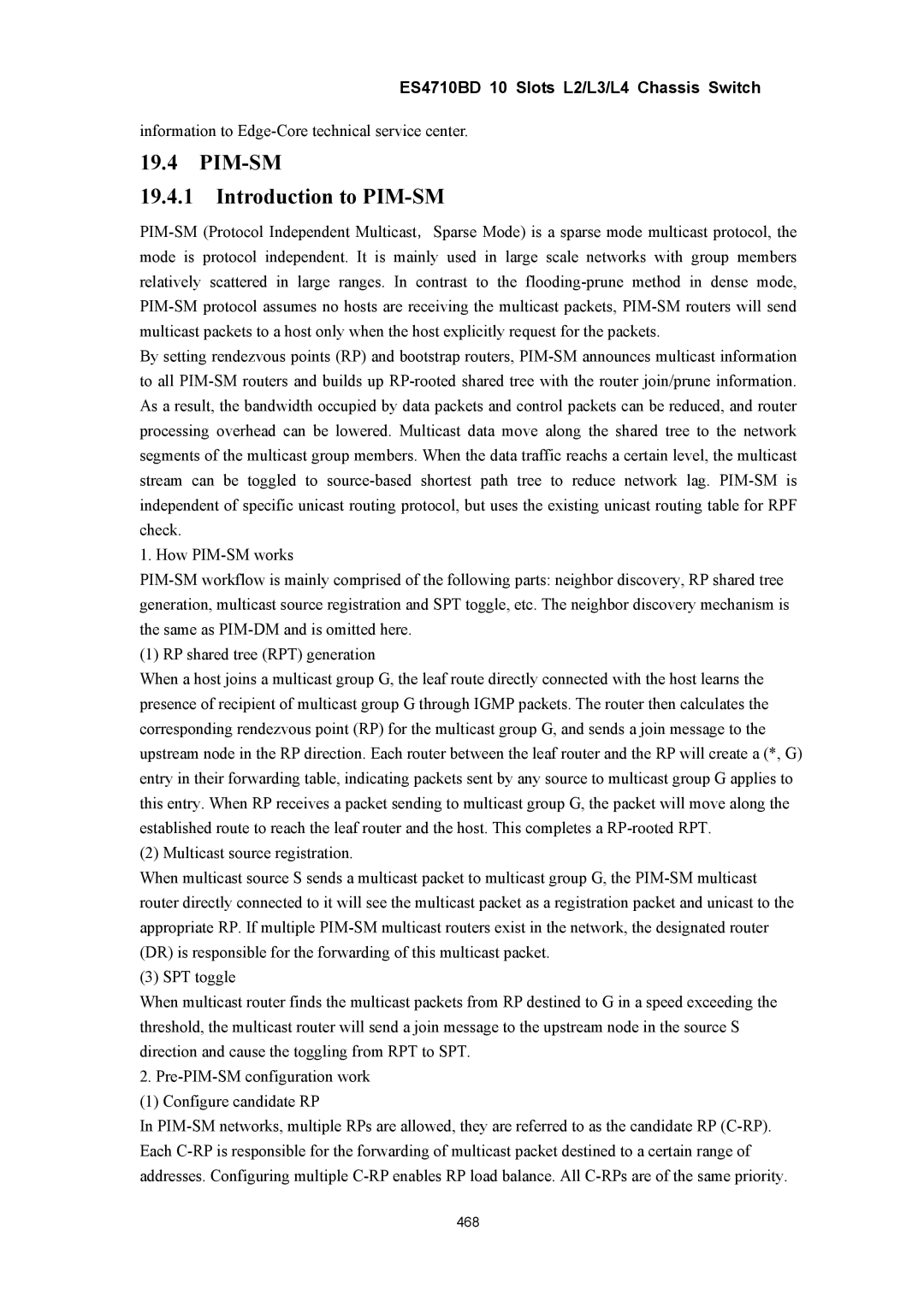ES4710BD 10 Slots L2/L3/L4 Chassis Switch
information to
19.4PIM-SM
19.4.1Introduction to PIM-SM
By setting rendezvous points (RP) and bootstrap routers,
1. How
(1) RP shared tree (RPT) generation
When a host joins a multicast group G, the leaf route directly connected with the host learns the presence of recipient of multicast group G through IGMP packets. The router then calculates the corresponding rendezvous point (RP) for the multicast group G, and sends a join message to the upstream node in the RP direction. Each router between the leaf router and the RP will create a (*, G) entry in their forwarding table, indicating packets sent by any source to multicast group G applies to this entry. When RP receives a packet sending to multicast group G, the packet will move along the established route to reach the leaf router and the host. This completes a
(2) Multicast source registration.
When multicast source S sends a multicast packet to multicast group G, the
(3) SPT toggle
When multicast router finds the multicast packets from RP destined to G in a speed exceeding the threshold, the multicast router will send a join message to the upstream node in the source S direction and cause the toggling from RPT to SPT.
2.
(1) Configure candidate RP
In
468
